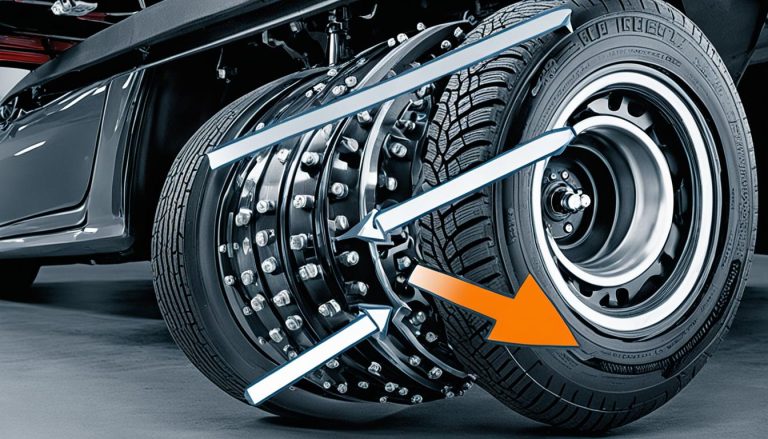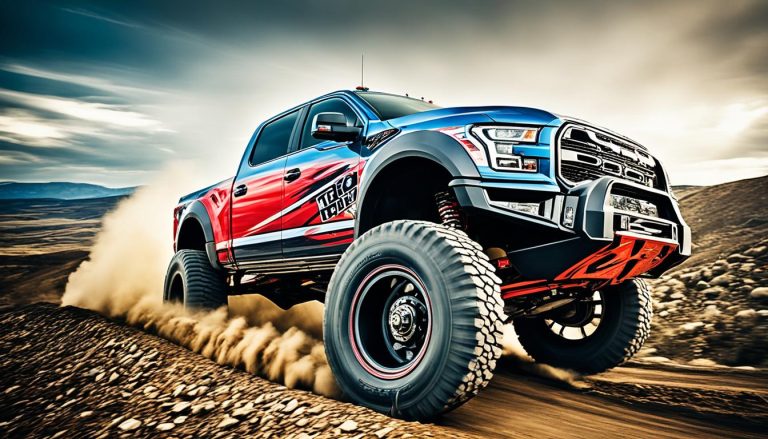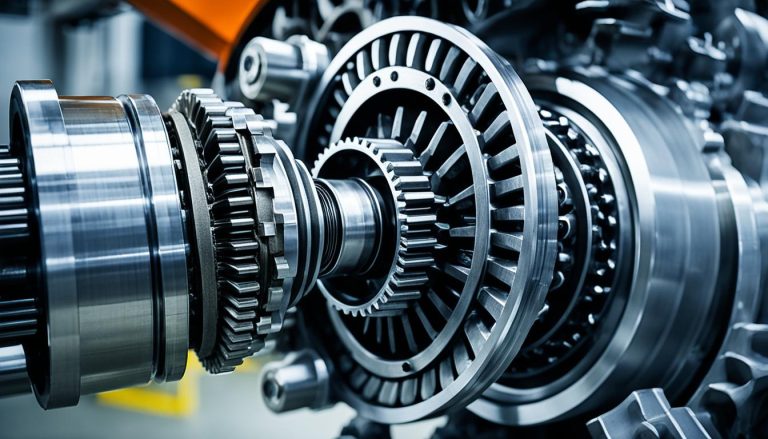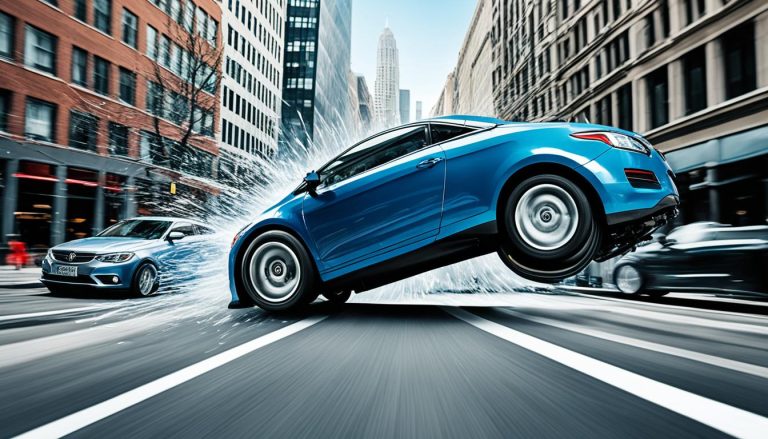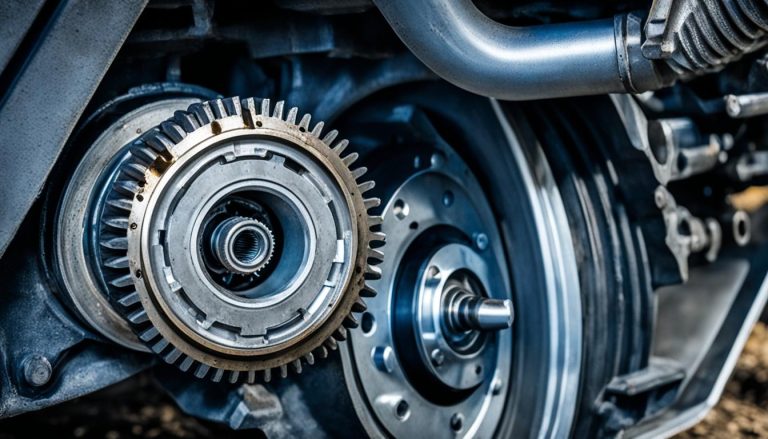Limited Slip Rear Axle Explained – Your Guide
Are you curious about limited slip rear axles and how they work? In this guide, we’ll dive into the world of limited slip differentials (LSDs), unravelling their benefits and shedding light on their inner workings. Whether you’re a racer, overlander, or work truck owner, understanding limited slip differentials can greatly enhance your vehicle’s performance and control.
Key Takeaways:
- Limited slip differentials distribute power and control, allowing wheels to spin at different speeds.
- These differentials improve traction and control, particularly during turns or on low-traction surfaces.
- There are various types of LSDs, including one-way, two-way, and 1.5-way LSDs, categorized as clutch, gear, or cone type.
- Auburn Gear is a renowned manufacturer known for reliability and high-performance LSDs.
- Compared to open differentials, limited slip differentials offer better traction, handling, and tire wear reduction.
Origins of Limited Slip Differentials
Limited slip differentials have been around since the 1930s and have a rich history that can be traced back to ancient times when torque was necessary for cart pulling. The concept of differentials, which distribute power between the wheels of a vehicle, became more significant as the need for enhanced power and maneuverability arose.
In the early days, open differentials were commonly used. These differentials provided equal power to both wheels, ensuring smooth turns and stable handling. However, they had limitations when it came to delivering power to the wheels with the most traction. This posed a challenge, especially during turns and on surfaces with uneven traction.
With the advent of limited slip differentials, this problem was addressed. Limited slip differentials allowed for independent wheel spin, enabling the wheels to rotate at different speeds and automatically distribute power to the wheel with the greatest traction. This innovative design revolutionized vehicle performance, providing better control and stability in various driving conditions.
Benefits of Limited Slip Differentials
Limited slip differentials offer several advantages over open differentials. When it comes to ensuring optimal traction and control, limited slip differentials are the way to go. Here are the key benefits:
- Improved Traction: Limited slip differentials give more power to the wheel with greater traction, allowing it to maintain better contact with the road. This reduces steering wheel shake and ensures that all wheels move in the same direction, providing enhanced traction and stability.
- Reduced Tire Wear: By distributing power to the wheel with more traction, limited slip differentials minimize tire slippage and overall wear. This not only prolongs the lifespan of your tires but also helps save money on replacements.
- Enhanced Maneuverability: Limited slip differentials come in handy when navigating tight spots or challenging terrains. By delivering power to the wheel with better grip, they allow your vehicle to maneuver with greater ease and control.
- Superior Performance during Turns: Limited slip differentials shine when it comes to handling turns. They enable the outside wheel to spin faster than the inside wheel, preventing skidding and improving overall control. This translates to smoother and safer turns, especially at higher speeds.
In comparison to open differentials, limited slip differentials provide better traction, handling, and overall driving experience. Whether you’re a performance enthusiast or an everyday driver, the advantages of limited slip differentials are clear.

With limited slip differentials, you can unleash the full potential of your vehicle while enjoying the benefits of improved traction, reduced tire wear, enhanced maneuverability, and superior performance during turns.
Types of Limited Slip Differentials
When it comes to limited slip differentials (LSDs), there are various types available, each offering unique characteristics and performance advantages. Let’s explore the different types of LSDs:
1. One-Way LSD
One-way LSDs, as the name suggests, limit slip during either acceleration or deceleration. These LSDs are commonly found in front-wheel drive vehicles and contribute to improved traction and handling.
2. Two-Way LSD
Two-way LSDs are designed to limit slip not only during acceleration but also during deceleration and reverse. This type of LSD provides enhanced control and stability in various driving conditions.
3. 1.5-Way LSD
Similar to the two-way LSD, the 1.5-way LSD limits slip during acceleration, deceleration, and reverse. However, it exhibits different characteristics in each direction, catering to specific driving preferences and conditions.
4. Clutch LSD
Clutch LSDs utilize clutch discs and springs to lock and limit slip. They offer precise power transfer and are known for their smooth operation and reliability.
5. Gear LSD
Gear LSDs employ gears to limit slip and distribute power effectively. This type of LSD provides excellent durability and is ideal for high-performance applications.
6. Cone LSD
Cone LSDs use friction-lined cones and springs to lock and limit slip. This design ensures reliable traction and power transfer, making cone LSDs suitable for demanding driving conditions.
Among these various types, Auburn Gear stands out as a reputable manufacturer of limited slip differentials. They specialize in the production of LSDs with a unique cone clutch design, offering increased traction and superior power transfer.
To gain a clearer understanding of the characteristics and differences between these LSD types, refer to the table below:
| LSD Type | Main Features |
|---|---|
| One-Way LSD | Slip limited during acceleration or deceleration |
| Two-Way LSD | Slip limited during acceleration, deceleration, and reverse |
| 1.5-Way LSD | Slip limited during acceleration, deceleration, and reverse with varying characteristics |
| Clutch LSD | Utilizes clutch discs and springs for precise power transfer |
| Gear LSD | Uses gears for effective power distribution |
| Cone LSD | Employs friction-lined cones and springs for reliable traction |
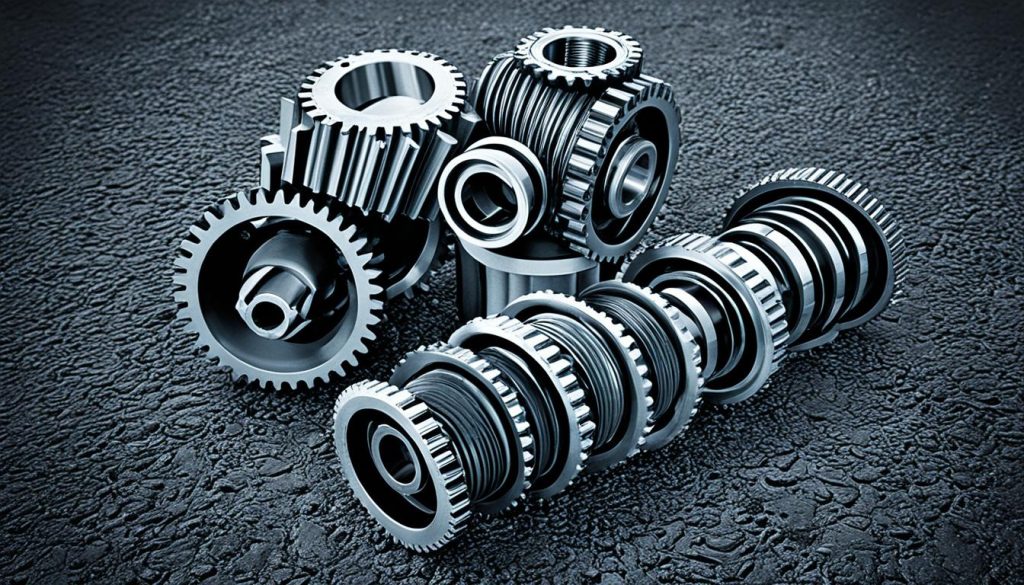
Understanding the different types of limited slip differentials allows you to choose the optimal LSD for your specific driving needs and preferences. Now that you’re familiar with the categories of LSDs, let’s take a closer look at the advantages they offer over open differentials in the next section.
Limited Slip Differential vs. Open Differential
When it comes to traction and handling, limited slip differentials (LSDs) have a clear advantage over open differentials. While open differentials distribute equal torque to both wheels, regardless of their traction, LSDs smartly direct more power to the wheel with greater traction. This crucial feature significantly improves your vehicle’s overall traction and handling capabilities. Whether you’re tackling challenging turns or driving on a low traction surface, LSDs provide the extra support needed to keep you in control.
For enthusiasts seeking enhanced performance, many high-performance cars are equipped with limited slip differentials. Popular models like the Mazda MX-5, Porsche 911, and Honda Civic Type R come factory-fitted with LSDs. This inclusion speaks to the undeniable benefits and enhanced driving experience that LSDs deliver. By optimizing power distribution to the wheel with the most traction, LSDs put you in command, enabling you to take corners with confidence and push your vehicle to its limits.
Understanding limited slip differentials is crucial for any car enthusiast. Unlike open differentials, which provide the same torque to both wheels, LSDs actively regulate power distribution. This enhanced control gives you the confidence to tackle any driving scenario, whether it’s a spirited weekend drive or navigating tricky terrain. By intelligently managing power delivery, LSDs maximize available traction, improve stability, and make your overall driving experience more enjoyable and secure.
In summary, limited slip differentials are undoubtedly superior to open differentials when it comes to enhancing traction and handling. Whether you’re driving a performance car or seeking better control during your daily commute, LSDs offer significant advantages. Their ability to distribute power intelligently to the wheel with greater traction ensures that you stay firmly planted on the road, even in challenging driving conditions. So, if you’re looking to take your driving experience to the next level, consider upgrading to a limited slip differential.
FAQ
What is a limited slip rear axle?
A limited slip rear axle, also known as a limited slip differential (LSD), is a performance differential that allows wheels to spin at different speeds while distributing more power to the wheel with greater traction. This improves vehicle traction and control, particularly during turns or when one wheel is on a low traction surface.
How does a limited slip differential work?
A limited slip differential works by using various mechanisms, such as clutches, gears, or cones, to allow the wheels to spin at different speeds while transferring more power to the wheel with more traction. This helps improve traction, handling, and control in various driving conditions.
What are the benefits of a limited slip differential?
Limited slip differentials provide several benefits, including improved traction and handling, reduced steering wheel shake, slower tire wear, and enhanced maneuverability in tight spots. They also prevent skidding and improve control during turns by allowing the outside wheel to spin faster than the inside wheel.
What are the types of limited slip differentials?
Limited slip differentials come in various types, including one-way LSDs, two-way LSDs, and 1.5-way LSDs. They can be categorized as clutch LSDs, gear LSDs, or cone LSDs, depending on the mechanism used to lock and limit slip.
What is the difference between a limited slip differential and an open differential?
Limited slip differentials distribute more power to the wheel with greater traction, improving traction and handling compared to open differentials, which provide equal power to both wheels. Limited slip differentials are particularly useful during turns and when one tire is on a low traction surface. Many performance cars come equipped with limited slip differentials to enhance their performance.

